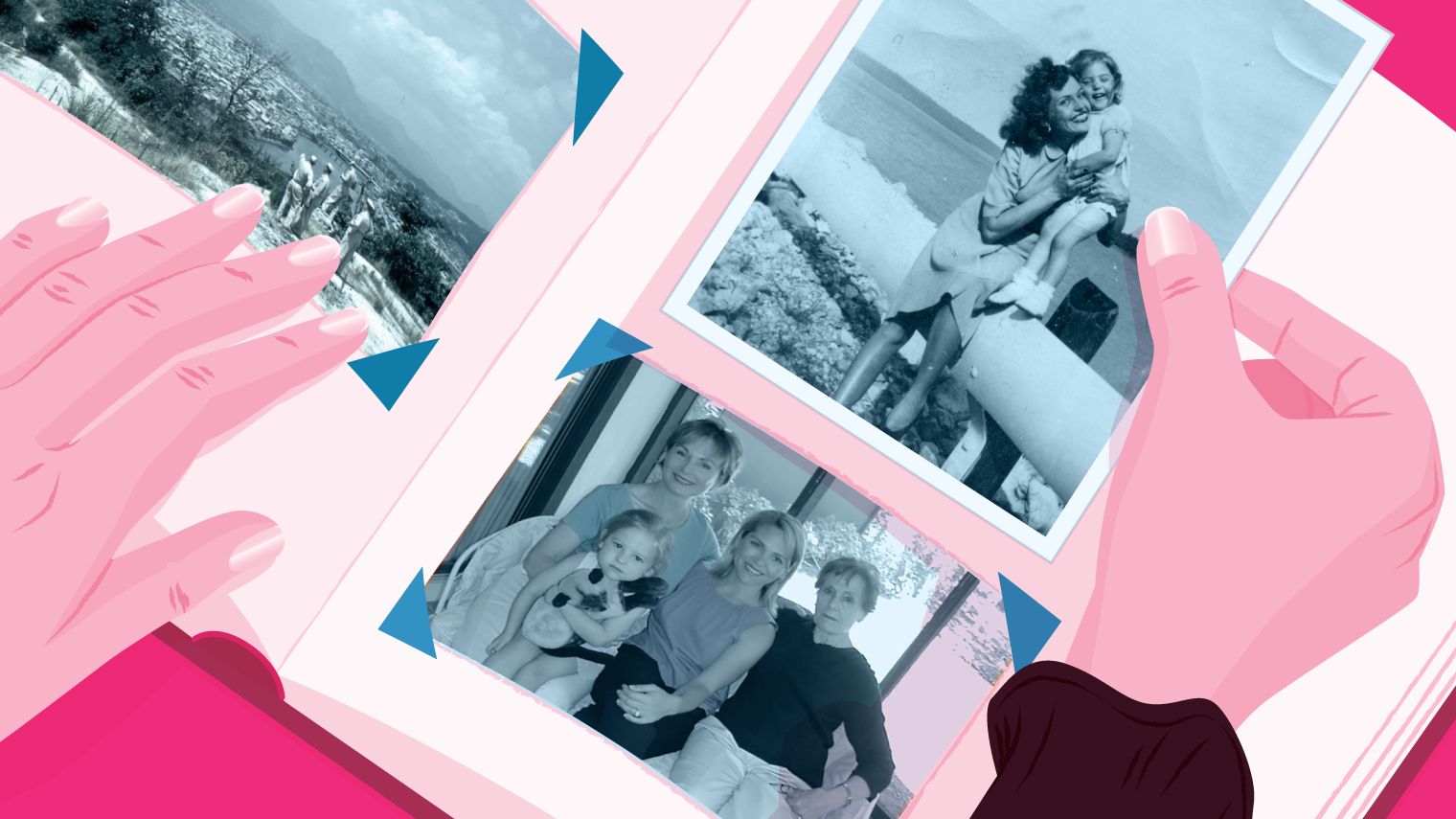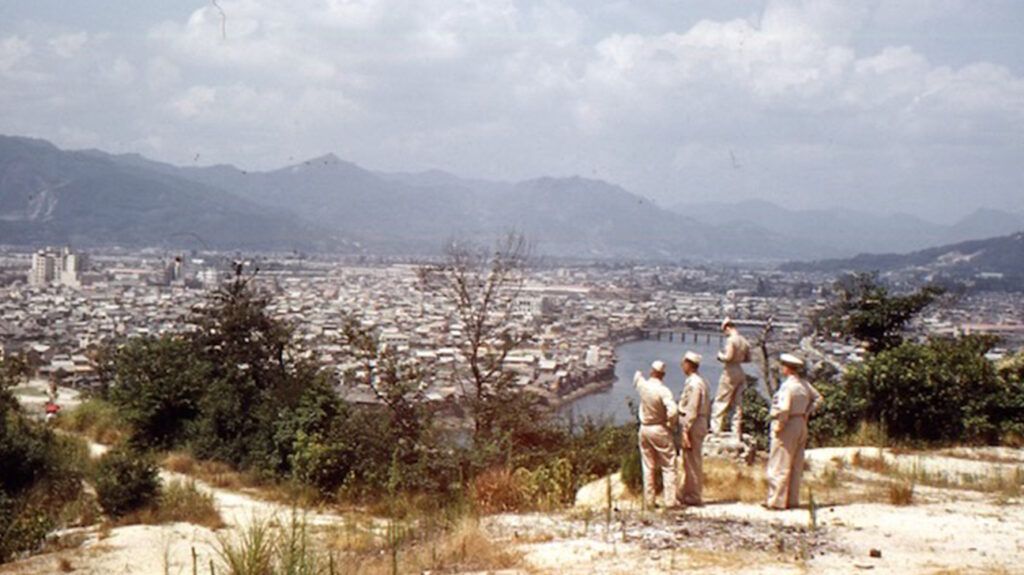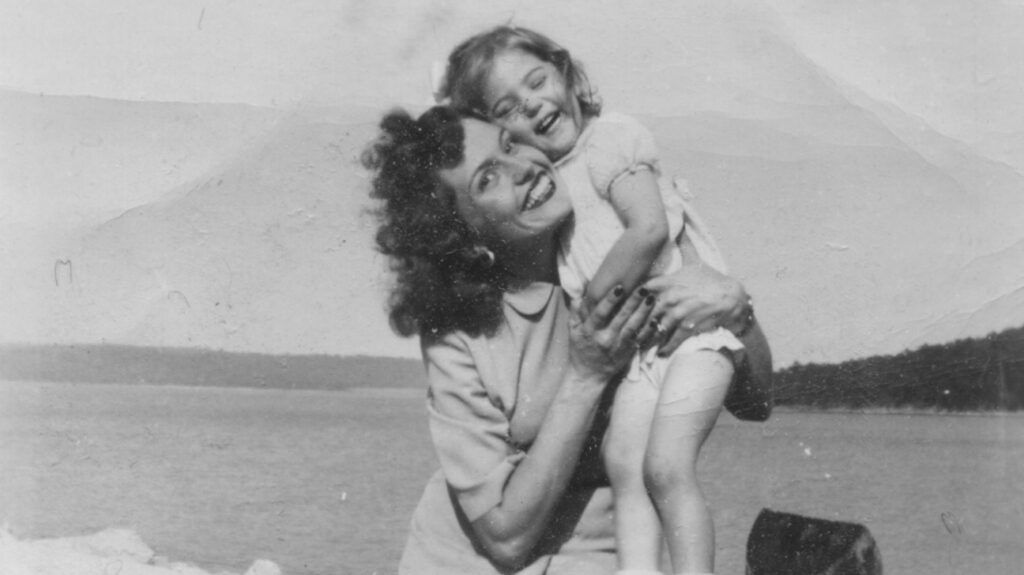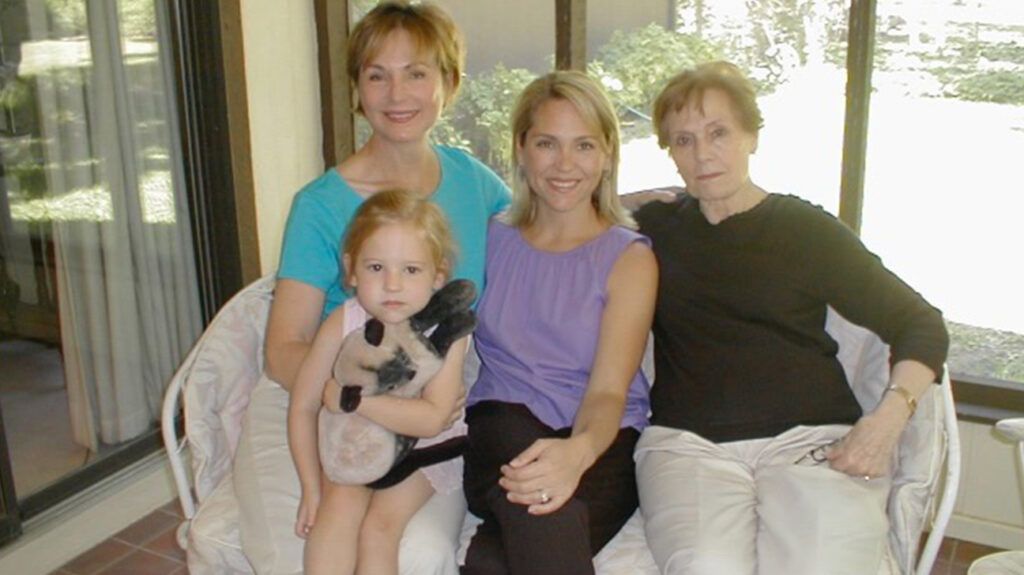From Past to Present: My Breast Cancer Journey and the Changing Treatment Landscape
August 12, 2024
Content created for the Bezzy community and sponsored by our partners. Learn More

Illustration by Jason Hoffman
My mother and I both had breast cancer, but her treatment in the 1950s looked very different from my own experience in the 1970s.
I lived in Japan for 5 years after World War II when my father was in the U.S. Army as a liaison between the U.S. and Japanese governments. I remember standing with my mother on a hill overlooking Nagasaki when I was 5 or 6 years old in 1948 or ‘49.
This would have been 3 to 4 years after the United States dropped the atomic bomb called Fat Man on Nagasaki. I remember gray rubble amid a few standing buildings.

After the tour in Japan, my dad was stationed as a Professor of Military Science and Tactics at the University of Arkansas in Fayetteville. And when I was 13, my mother was diagnosed with breast cancer. It was 1956. She was 34.
I remember visiting her in the hospital and not having a clue what had happened to her.


My mother’s breast cancer treatment in 1956
When she came home from the hospital, it became obvious that her surgery was extremely radical. Even if she was wearing a loose-fitting dress, you could tell how much tissue they removed from her chest — but it was standard procedure at that time.
Everything that was nonessential, from her collarbone to her waist, was removed to the ribs. She required extensive skin grafts from her thighs to cover the area where breast tissue was removed.
The upside? She was saved from certain death at the time.

Forty years later, when my mother was 80 years old, she experienced knee pain. She was scheduled for a knee replacement when doctors found a cancer recurrence during testing.
She went through chemo, but it was unsuccessful, and our beloved mom died in 2004. I’ve always suspected that exposure to radiation during our visit to the atomic bomb site was somehow responsible.
Getting misdiagnosed by my doctor
My own journey with breast cancer began in the 1970s when I was diagnosed with cystic breasts and had several cysts removed. In 1973, I noticed another lump and went to my OB-GYN. He assured me it was just scar tissue from the cyst removals, even though I knew it was in a different place.
He said: “What do you know? You were asleep!”
The lump became painful and was unmovable. When I saw my doctor’s partner on another visit, he immediately checked me into the hospital.
The doctors told me that if they found cancer during the biopsy procedure, they would do an on-the-spot mastectomy. No choice, no chance to make a decision or discuss treatment options.
Surgery was the only option. Back then, they didn’t even know about different types of breast cancer.
When I woke from anesthesia, I was told the surgeon had done a radical mastectomy. In addition to my breasts, they removed my pectoralis major and lymph nodes in my axilla (armpit).
When the dressings were removed for the first time in the hospital, I was both shocked and grateful. It wasn’t as extensive as my mother’s surgery.
My breast cancer treatment in 1973
After the mastectomy, I received radiation therapy in San Antonio, Texas.
Shortly afterward, I got a call from a college friend who checked in with me every year or so. He was a doctor in Massachusetts and told me there was a clinical trial at MD Anderson in Houston — and he got me in.
We traveled to Houston every 3 weeks so I could receive adriamycin, cytoxan, and 5-fluorouracil intravenously. It was very grueling, as there were no anti-nausea drugs at that time.
I was in the experimental group that also received Bacillus Calmette-Guérin (BCG) immunotherapy. Immunology is a treatment that boosts your immune system to better fight cancer cells.
During the trial, my husband at the time would cut a 2-inch square into my skin, with 10 lines horizontally and vertically. We’d apply a bacteria smear to the area, and I’d wear a mini-Frisbee until it healed 3 to 4 weeks later. Then, we’d do it again on a new area on my arms or legs.
The clinical trial researchers found BCG immunotherapy to be ineffective for breast cancer, but my doctor swore it did some good.
I also know that your attitude has a whole lot to do with your physical being. I was much younger than other women in the trial, and I kind of felt like their cheerleader.
I was lucky to have two young kids and horses at the time because I had so much to look forward to and so much work to do. One of my horses was pregnant, and I decided to name her baby “Viva,” which means “long live.”

The trial ended after one year, at which time I received a lifetime dose of adriamycin. I don’t know how high my dose was, but it was way more than they administer today — and it started to cause heart failure.
Swelling is a common symptom of heart failure. I was on my way to the barn one day wearing my jodhpurs and riding boots when my legs got so swollen I had to go to the hospital. They cut off my boots, and I was more upset about my boots than my heart not working.
Thankfully, my heart complications subsided after the clinical trials ended.
My breast reconstruction journey
In 1973, there was no reconstructive surgery. I wore breast prostheses for about 13 years.
Around 1986, my friend again called to check in, and he told me there was a new reconstruction procedure at Emory University in Atlanta.
I took his advice to undergo a TRAM flap reconstruction. It involved using my abdominal fat and muscle, tunneling it under the skin, and forming a breast(ish) mound on my chest. It was life changing, since I could now wear a regular bra!
The fact that I couldn’t do a sit-up to save my life was a small price to pay, I thought. Many reconstructions done today are muscle-sparing, and they don’t leave railroad track scars like they did in the 70s.
Embracing life after a recurrence
I lived 50 years with no sign of recurrence. A lifetime filled with two wonderful children, four grandchildren whom I love dearly, great friendships, and dreams realized.
In December 2023, my recurrence announced itself through difficulty breathing. X-rays and CT scans revealed a tumor in my pleural space (the membrane around the lungs).
It’s small, and I know there have been great strides made in cancer research. I’m eager to learn more about the advanced treatments now available.
During my recent appointment at MD Anderson, my husband asked my oncologist, “How many 80-year-old breast cancer survivors have you seen with a recurrence after 50 years in remission?”
He turned to me and said, “One, and you’re her.”
Medically reviewed on August 12, 2024


Like the story? React, bookmark, or share below:
Have thoughts or suggestions about this article? Email us at article-feedback@bezzy.com.
About the author